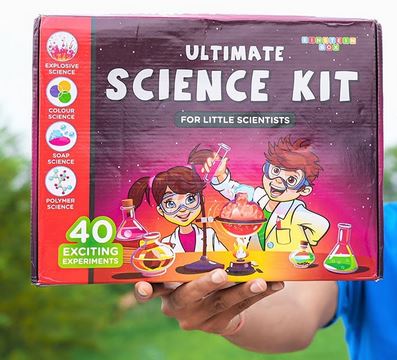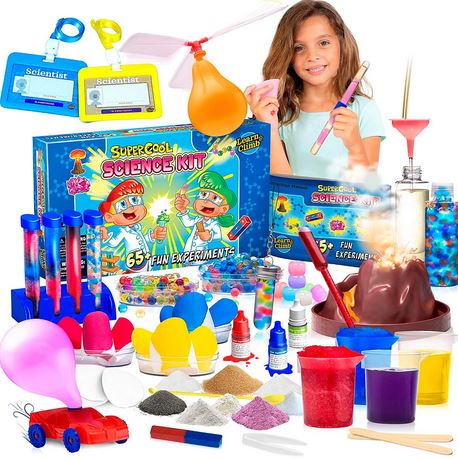Introduction to the Science Kit
Welcome to the fascinating world of science! Imagine unlocking the secrets of the universe right from your own home. With a Science Kit you can embark on thrilling experiments that spark curiosity and ignite creativity. These kits are more than just boxes of materials; they’re gateways to exploration and discovery. Whether you’re a budding scientist or just looking for an engaging way to learn, a Science Kit offers endless possibilities for hands-on learning. Let’s dive into how these kits transform education and make complex concepts accessible to everyone
The Prominence of Hands On Knowledge in Science Education
Hands-on learning is vital in science education. It transforms abstract concepts into tangible experiences. When students engage directly with materials, they grasp ideas more effectively.
Manipulating objects helps build critical thinking skills. Instead of memorizing facts, learners explore scientific principles through experimentation. This active participation sparks curiosity and fosters a love for discovery.
Moreover, hands-on activities cater to different learning styles. Visual learners benefit from seeing experiments unfold, while kinesthetic learners thrive by physically interacting with experiments. Each student can find their unique way to understand complex topics.
Collaboration also plays a key role. Working together on projects encourages teamwork and communication among peers. These skills are essential not only in academics but also in real-world scenarios.
Incorporating hands-on elements into science education cultivates problem-solving abilities as students navigate challenges during experiments or investigations.
What’s Included in a Science Kit?
A science kit is a treasure trove of exploration. Each kit varies, but they typically contain essential components for hands-on experiments and learning.
You’ll often find test tubes, beakers, and pipettes designed to make experimentation easy. These tools allow young scientists to mix chemicals safely or observe reactions closely.
Instruction manuals are another staple in these kits. They guide users through exciting projects while explaining the underlying scientific principles.
Many science kits also come with materials like magnets, batteries, or even small plants for biology experiments. This diverse range ensures that learners can engage with various scientific disciplines.
Some advanced kits include digital resources or online access to interactive lessons. Such features enhance the educational experience significantly by connecting theory to practical application.
A well-equipped science kit transforms curiosity into discovery through engaging hands-on activities tailored for all ages.

How to Use a Science Kit for Maximum Learning
To get the most out of your science kit, start by carefully reading the instructions. Familiarizing yourself with each experiment lays a solid foundation.
Set up a dedicated workspace where you can spread out materials. This keeps everything organized and minimizes chaos during experiments.
Encourage exploration and curiosity. Allow yourself to ask questions about the processes you’re observing. The more you involve with the physical, the profounder your sympathetic will be.
Don’t rush through activities. Take time to observe outcomes, record results, and reflect on what you’ve learned.
Incorporate discussions with friends or family members who are also interested in science. Sharing ideas enhances learning experiences and sparks new interests.
Consider keeping a journal for documenting experiments and findings. Writing down thoughts helps reinforce concepts while providing a lasting reference for future inquiries.
Top Benefits of Using a Science Kit
Using a science kit can transform the way young minds engage with learning. It sparks curiosity and fosters a sense of discovery that traditional methods often miss.
Hands-on experiments make complex concepts more accessible. Children are not just passive learners; they become active participants in their education. This communicating method improves retention and sympathetic.
Science kits also promote critical thinking skills. When faced with challenges, kids learn to hypothesize, test, and analyze results—skills crucial for future academic success.
Another benefit is the development of patience and perseverance. Science experiments may not always go as planned, teaching children to embrace mistakes as part of the learning journey.
Moreover, these kits encourage teamwork when used in group settings. Collaborating on projects helps build social skills while deepening scientific knowledge through shared experiences.
Recommended Science Kits for Different Age Groups
For preschoolers, consider a basic science kit with colorful building blocks and simple experiments. These kits often include easy-to-follow guides that spark curiosity through play.
Elementary school students might enjoy kits focused on chemistry or biology. Look for options featuring hands-on activities like creating slime or growing crystals. These engaging projects encourage exploration and critical thinking.
As kids progress to middle school, more advanced kits become available. Robotics and coding sets are popular choices, allowing young learners to build their own machines while understanding the principles of engineering.
High school students can delve into specialized areas with comprehensive science kits designed for experimentation in physics or environmental studies. Kits that provide real lab experiences will deepen knowledge and skills relevant to future scientific pursuits.
Each age group has unique needs and interests; selecting the right kit makes learning enjoyable and impactful.
Conclusion:
The journey through science is an exciting adventure. With a well-curated Science Kit, you have the tools to explore the mysteries of our universe right at your fingertips.
From chemical reactions that fizz and bubble to physics experiments that defy gravity, these kits offer hands-on experiences that ignite curiosity. They encourage experimentation, foster critical thinking skills, and make complex concepts accessible.
Whether you’re a parent looking for educational activities or a teacher seeking engaging classroom resources, there’s a Science Kit tailored just for you. Embrace this opportunity to empower learning in ways textbooks simply can’t match.
